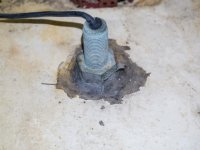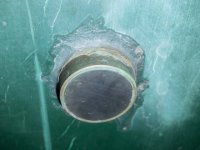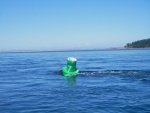colbysmith
Active member
- Joined
- Oct 2, 2011
- Messages
- 5,038
- Reaction score
- 15
- C Dory Year
- 2009
- C Dory Model
- 25 Cruiser
- Hull Identification Number
- UWH25301J809
- Vessel Name
- C-Traveler
It's been a while since this was discussed and I'm opening a new thread for current technology. I've always wanted to get a transducer that would measure water speed, along with temperature and sonar. In recent communications I have learned from Garmin that their GST43 Thru-Hull transponder, with the GST10 package, would allow either my GPSMAP 541 or GPSMAP 840 to read water speed via a NMEA 2000 connection. Is anyone here familiar with the GST43, or have experience with a thru hull transducer? (Do not confuse this with a transducer that shoots thru the hull. A thru hull would involve cutting a hole all the way through the hull, and then placing the transducer into the hull. I would overdrill the hole and epoxy or fiberglass in so that the transducer would not leave the hull core exposed to moisture..)
I don't believe there are any transom mount transducers with water speed that would continue to transmit downview data for the 840, or work with the 541.
I'm also curious about how easy/often water speed transducers become fouled? I imagine a thru-hull would be harder to access for cleaning while on the water.
Colby
I don't believe there are any transom mount transducers with water speed that would continue to transmit downview data for the 840, or work with the 541.
I'm also curious about how easy/often water speed transducers become fouled? I imagine a thru-hull would be harder to access for cleaning while on the water.
Colby




